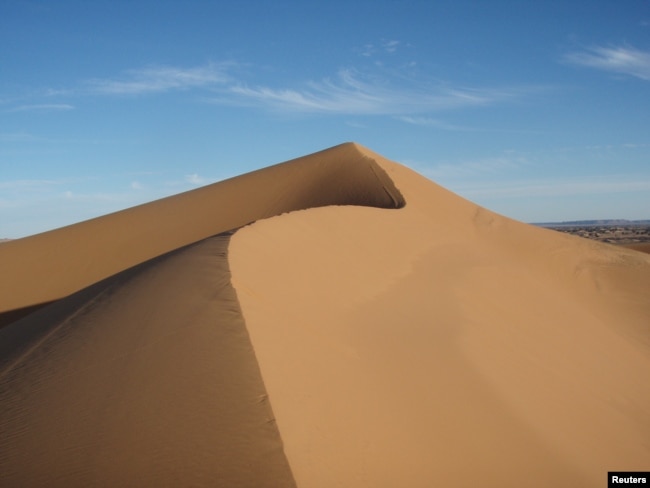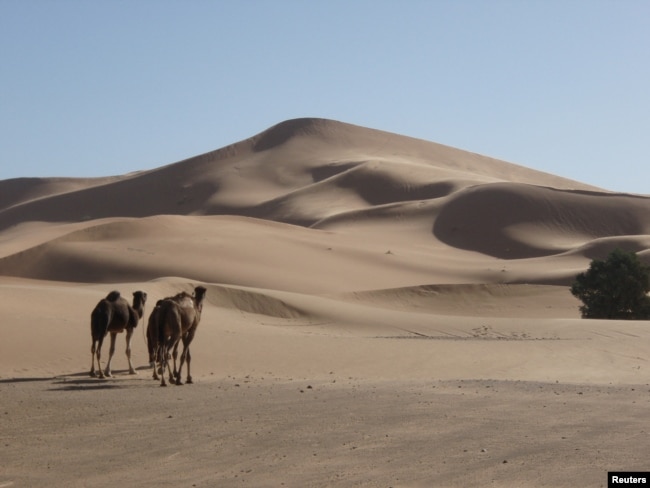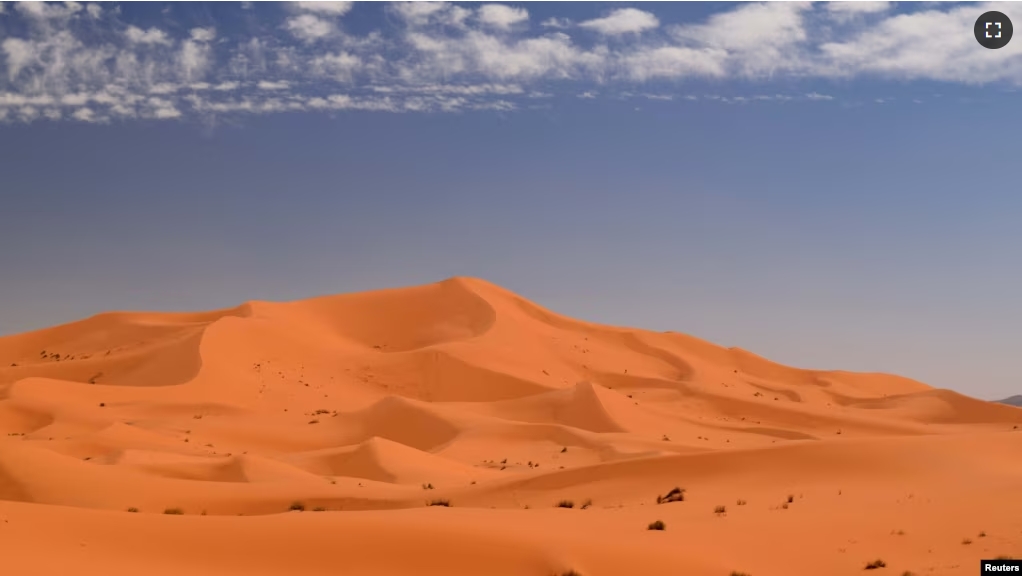Researchers have used radar and other technologies to study a large “star” sand dune in eastern Morocco. The team said it was able to capture detailed data on how these dunes form and develop.
A star dune is named after its shape because it can look like a star when seen from above. These structures are very large and have a hill, or peak, at the top. They have large masses, called arms, spreading out from the peak. Star dunes are shaped by wind and other conditions in the environment.
Star dunes are common in deserts and can be found in Africa, the Middle East, China and North America. But scientists say, although there are a lot of star dunes, the formations have not been studied very much so far.
The new study – believed to be the first of its kind – was led by two British researchers. It examines a large star dune in the Sahara Desert’s Erg Chebbi sand sea in Morocco. The research results recently appeared in the publication Scientific Reports.

The scientists said the star dune rises 100 meters above surrounding dunes and is 700 meters wide. The structure contains an estimated five-and-a-half metric tons of sand.
The researchers used radar that can “see” underground to look at different elements within the star dune. The science instruments that were used are designed to map all layers within the dunes. They also used a method called luminescence dating to study the age of the dune. This method uses minerals in the sand to estimate when they last received sunlight in an attempt to guess the age of the dune.
Geoff Duller is a professor of geography and earth sciences at Britain’s Aberystwyth University. He said in a statement the new technology had finally made it possible to study these large dunes. “It’s only because of new technology that we can start to uncover their secrets,” Duller said.

The researchers estimated the oldest parts of the base of the star dune are about 13,000 years old. And the dune is moving across the desert at a rate of about 50 centimeters a year. The team noted the star dune experienced the most growth during the past 1,000 years.
Star dunes make up just 10 percent of all dunes in Earth’s deserts. They have also been observed on Mars and on Saturn’s moon Titan.
Earth’s largest star dunes are found in western China’s Badain Jaran desert. Star dunes also are found in places including the Namib Sand Sea in Namibia, large sand seas in Algeria and Rub’ al Khali in Saudi Arabia. In North America, Great Sand Dunes National Park in Colorado contains a series of them.
“I first encountered star dunes in Namibia 20 years ago,” Duller told Reuters news agency. He added that he still has clear memories of being surprised at the size and beauty of the first sand dunes he saw. “I have a vivid memory of the long climb to the top, struggling up very loose sand in the heat of the day.”
I’m Bryan Lynn.
Reuters, Aberystwyth University and Scientific Reports reported on this story. Bryan Lynn adapted the reports for VOA Learning English.
_____________________________________________
Words in This Story
dune – n. a hill of sand in a desert
luminescence – n. the giving out of light by a substance
vivid – adj. clear or strong
